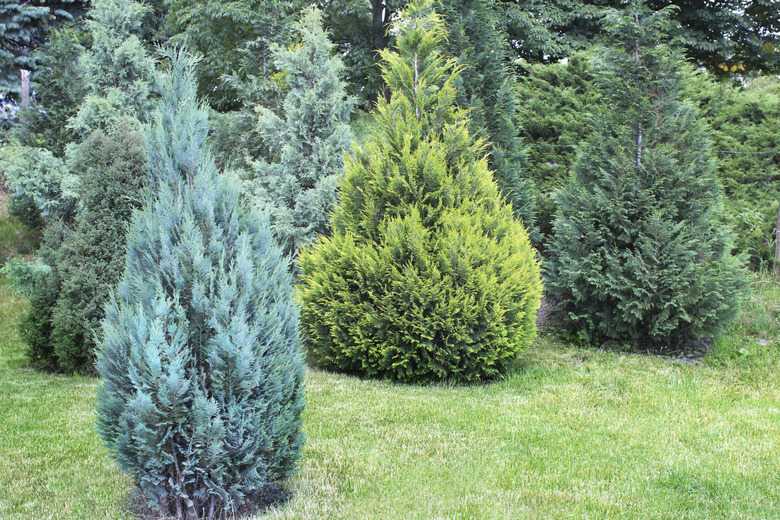What Are Shade-Loving Junipers?
Junipers (Juniperus spp.) come in all shapes and sizes, from low-growing ground covers to tall, soaring trees. They feature evergreen foliage and require only minimal maintenance. There are more than 50 species of juniper available, but most require full sunlight all day long and they aren't well-suited to shady locations. Selecting a juniper that can tolerate some shade allows you to enjoy these plants even if you don't have the ideal conditions.
Cultural Needs
Cultural Needs
Junipers cannot thrive in full shade, but many varieties can survive in partial shade with varying degrees of success. Generally, the plants will need at least full morning sunlight with only light or dappled afternoon shade. Junipers grow better in slightly dry soil. Areas that dry out slowly due to a combination of soil structure and shady conditions won't support a healthy juniper tree, but junipers can remain healthy in the shade if the soil isn't too wet. Infrequent watering only when the soil dries completely is all that's usually necessary to keep the juniper healthy.
Shady Issues
Shady Issues
Overly shady areas result in a more open growth habit instead of a full, lush plant. The foliage might not develop its full color without all-day sun exposure. Ground cover varieties, such as Parson's juniper (Juniperus davurica "Parsonii"), hardy in USDA zones 4 through 11, can survive in shade, but it will develop a more open growth habit and won't provide as dense of cover as it would in full sun. Shady conditions — as well as planting juniper too close together, limiting air circulation — can result in increased disease and insect problems.
Ground Cover Choices
Ground Cover Choices
Generally, the ground cover varieties of juniper are more tolerant of shade than the tree forms. Ohio State University Extension recommends the blue Pacific juniper (Juniperus conferta "Blue Pacific"), hardy in USDA zones 6 through 9, as the most shade-tolerant variety. This blue-tinged plant develops exceptionally dense foliage, so it can withstand some of the natural thinning that occurs in partial shade. Creeping juniper (Juniperus horizontalis), which grows in USDA zones 3 through 10, also tolerates partial shade, although its feathery needles won't be as lush or full and the plant will grow more slowly.
Taller Options
Taller Options
The taller tree and shrub forms are more dependent on full sunlight to produce strong trunks and branches, but a couple of varieties can tolerate partial shade. Spartan Chinese juniper (Juniperus chinensis "Spartan"), hardy in USDA zones 5 through 10, produces a dense conical shape up to 8 feet tall in full sun, but it is still healthy and attractive with its more open, shorter form in a partially shaded location. If you prefer an even taller tree that can survive all day in dappled shade, redcedar (Juniperus virginiana) is a suitable choice. It grows in USDA zones 3 through 9 and can reach a height of 60 feet, although it rarely grows this tall in shady locations. Redcedar works especially well as a screen or hedging plant because of its dense lower foliage.
References
- Ohio State University Extension: Juniperus
- University of Georgia Extension: Junipers
- Missouri Botanical Garden: Juniperus conferta 'Blue Pacific'
- Floridata: Juniperus Davurica "Parsonii"
- Floridata: Juniperus Horizontalis
- University of Florida Extension: Juniperus Chinensis "Spartan"
- Floridata: Juniperus Virginiana
